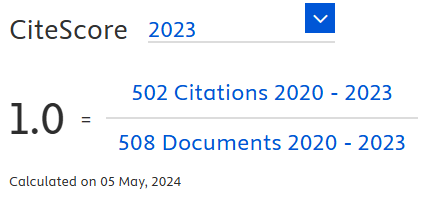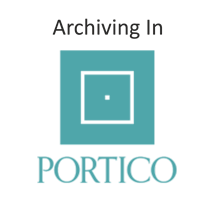Nutritional Values of Raw and Ripe Fruits of Two Commercially Viable Banana Cultivars ‘Grand Nain’ and ‘Sabri’: Exploring for Value Addition
DOI:
https://doi.org/10.18006/2025.13(2).272.283Keywords:
Grand Nain, Sabri cultivar, Green peel and pulp, Ripe peel and pulp, Nutritional values, Vitamin A contentAbstract
Bananas are a significant agricultural commodity valued for their delicacy and nutritional benefits. However, approximately 30% of bananas are wasted, underscoring the need for strategies to add value to this fruit. Additionally, bananas have the potential to help address a global issue: micronutrient deficiency. This study aimed to evaluate the nutritional and nutraceutical values of different parts (peel and pulp) of green and ripe bananas from two cultivars, Grand Nain and Sabri. We analyzed various nutritional and nutraceutical parameters, including ash content, crude fat, fiber, carbohydrates, protein, polyphenols, antioxidant activity, and Vitamin A content. The findings revealed that unripe banana pulps contained the highest carbohydrate content, while ripe banana peels demonstrated greater overall nutrient richness in terms of fiber, protein, minerals, and antioxidants, all of which are essential for the human body. This study highlights the potential for utilizing different parts of the banana, particularly the peels, to develop value-added products.
References
Adegunwa, M.O., Adelekan, E.O., Adebowale, A.A., Bakare, H.A., & Alamu, E.O. (2017). Evaluation of nutritional and functional properties of plantain (Musa paradisiaca L.) and tigernut (Cyperus esculentus L.) flour blends for food formulations. Cogent Chemistry, 3(1), 1383707. https://doi.org/10.1080/23312009.2017.1383707. DOI: https://doi.org/10.1080/23312009.2017.1383707
Ahmed, S., Shah, P., & Ahmed, O. (2023). Biochemistry, Lipids. In StatPearls. StatPearls Publishing. Retrieved from https://www.ncbi.nlm.nih.gov/books/NBK525952/.
Akaninwor, J.O., & Sodje. M. (2005). The effect of storage on the nutrient composition of some Nigerian foodstuffs: Banana and Plantain. Journal of Applied Sciences & Environmental Management, 9(3), 9–11. DOI: https://doi.org/10.4314/jasem.v9i3.17344
Ali, M.A., Awad, M.A., Al-Qurashi, A.D., El-Shishtawy, R.M., & Mohamed, S. A (2019). Quality and biochemical changes of “Grand Nain” bananas during shelf life. Journal of King Abdulaziz University, 28(1), 41–56. https://doi.org/10.4197/Met. DOI: https://doi.org/10.4197/Met.28-1.5
Ansari, N. A. I. M., Ramly, N., Faujan, N. H., & Arifin, N. (2023). Nutritional content and bioactive compounds of banana peel and its potential utilization: a review. Malaysian Journal of Science Health & Technology, 9(1), 74-86. DOI: https://doi.org/10.33102/mjosht.v9i1.313
Ao, T., & Deb C.R. (2019). Nutritional and antioxidant potential of some wild edible mushrooms of Nagaland, India. Journal of Food. Science & Technology, 56(2), 1084–1089. https://doi.org/10.1007/ s13197-018-03557-w. DOI: https://doi.org/10.1007/s13197-018-03557-w
AOAC (2000). Official Methods of Analysis, 17th Edn. The Association of Official Analytical Chemists, Gaithersburg. Methods, 925.10, 65.17, 974.24, 992.16.
Aremu, S., & Nweze, C. (2017). Determination of vitamin A content from selected Nigerian fruits using spectrophotometric method. Bangladesh Journal of Scientific & Industrial Research, 52(2), 153–158. DOI: https://doi.org/10.3329/bjsir.v52i2.32940
Arora, A., Choudhary, D., Agarwal, G., & Singh, V.P. (2008). Compositional variation in β-carotene content, carbohydrate and antioxidant enzymes in selected banana cultivars. International Journal of Food Science & Technology, 43(11), 1913–1921. https://doi.org/10.1111/j.1365-2621.2008.01743.x. DOI: https://doi.org/10.1111/j.1365-2621.2008.01743.x
Baiyeri, K.P., Aba, S.C., Otitoju, G.T., & Mbah, O.B. (2011). The effects of ripening and cooking method on mineral and proximate composition of plantain (Musa sp. AAB cv. ’Agbagba’) fruit pulp. African Journal of Biotechnology, 10(36), 6979–6984. https://doi.org/10.5897/AJB11.607.
Baliyan, S., Mukherjee, R., Priyadarshini, A., Vibhuti, A., Gupta, A., Pandey, R.P., & Chang, C.M. (2022). Determination of antioxidants by DPPH radical scavenging activity and quantitative phytochemical analysis of Ficus religiosa. Molecules, 27(4), 1326. https://doi.org/10.3390/molecules27041326. DOI: https://doi.org/10.3390/molecules27041326
Bashmil, Y.M., Ali, A. Bk. A., Dunshea, F.R., & Suleria, H.A.R. (2021). Screening and characterization of phenolic compounds from Australian grown bananas and their antioxidant capacity. Antioxidants, 10(10), 1521. https://doi.org/10.3390/antiox10101521. DOI: https://doi.org/10.3390/antiox10101521
Bezerra, C.V., Rodrigues, A.M., da C. Amante, E.R., & Silva, L.H.M. da. (2013). Nutritional potential of green banana flour obtained by drying in spouted bed. Revista Brasileira de Fruticultura,35(4), 1140–1146. https://doi.org/10.1590/S0100-29452013000400025. DOI: https://doi.org/10.1590/S0100-29452013000400025
Borges, C.V., Maraschin, M., Coelho, D.S., Leonel, M., Gomez, H.A.G., Belin, M.A.F., Diamante, M.S., Amorim, E.P., Gianeti, T., Castro, G.R., & Lima, G.P.P. (2020). Nutritional value and antioxidant compounds during the ripening and after domestic cooking of bananas and plantains. Food Research International, 132, 109061. https://doi.org/10.1016/j.foodres.2020.109061 DOI: https://doi.org/10.1016/j.foodres.2020.109061
Chauhan, N., & Jethva, K.R. (2016). Drying characteristics of banana powder. Indian Journal of Science, 23(77), 75–88.
Dotto, J., Matemu, A.O., & Ndakidemi, P.A. (2019). Nutrient composition and selected physicochemical properties of fifteen Mchare cooking bananas: a study conducted in northern Tanzania. Scientific African, 6, e00150. https://doi.org/10.1016/j.sciaf.2019.e00150. DOI: https://doi.org/10.1016/j.sciaf.2019.e00150
Elbagoury, M.M., Turoop, L., Runo, S., Sila, D.N., & Madivoli, E.S. (2022). Postharvest treatments of banana (Musa acuminata cv. ‘Grand Nain’, AAA) during cold and ripening temperatures with chitosan and chitosan nanoparticles to alleviate chilling injury and maintain antioxidant activity. Horticulture, Environment & Biotechnology, 63(5), 677–699. https://doi.org/10.1007/s13580-022-00436-4. DOI: https://doi.org/10.1007/s13580-022-00436-4
Food and Agricultural Organizations (FAO). 2019. Banana facts and figures- Markets and Trade. Retrieved from http://www.fao.org/ economic/est/est-commodities/oilcrops/bananas/bananafacts/en/.
Fu, L., Xu, B.T., Xu, X. R., Gan, R.Y., Zhang, Y., Xia, E.Q., & Li, H.B. (2011). Antioxidant capacities and total phenolic contents of 62 fruits. Food Chemistry, 129(2), 345-350. DOI: https://doi.org/10.1016/j.foodchem.2011.04.079
Goyal, K., Singh, N., Jindal, S., Kaur, R., Goyal, A., & Awasthi, R. (2022). Kjeldahl method. Advanced Techniques of Analytical Chemistry, 1, 105. DOI: https://doi.org/10.2174/9789815050233122010011
Hapsari, L., & Lestari, D.A. (2016). Fruit characteristic and nutrient values of four Indonesian banana cultivars (Musa spp.) at different genomic groups. Agrivita, 38(3), 303–311. https://doi.org/10.17503/agrivita.v38i3.696. DOI: https://doi.org/10.17503/agrivita.v38i3.696
Khawas, P., & Deka, S.C. (2016). Comparative nutritional, functional, morphological, and diffractogram study on culinary banana (Musa ABB) peel at various stages of development. International Journal of Food Properties, 19(12), 2832–2853. https://doi.org/10.1080/10942912.2016.1141296. DOI: https://doi.org/10.1080/10942912.2016.1141296
Khoza, M., Kayitesi, E., & Dlamini, B.C. (2021). Physicochemical characteristics, microstructure and health promoting properties of green banana flour. Foods,10(12), https://doi.org/10.3390/foods10122894. DOI: https://doi.org/10.3390/foods10122894
Kookal, S. K., & Thimmaiah, A. (2018). Nutritional composition of staple food bananas of three cultivars in India. American Journal of Plant Sciences, 9(12), 2480–2493. https://doi.org/10.4236/ajps.2018.912179. DOI: https://doi.org/10.4236/ajps.2018.912179
Kumar, P.S., Saravanan, A., Sheeba, N., & Uma, S. (2019). Structural, functional characterization and physicochemical properties of green banana flour from dessert and plantain bananas (Musa spp.). LWT, 116, 108524. https://doi.org/10.1016/j.lwt.2019.108524. DOI: https://doi.org/10.1016/j.lwt.2019.108524
Kumari, S., Gogoi, S.S., Shamim, M.Z., Laskar, I., Mohanta, T.K., Penna, S., & Mohanta, Y.K. (2022). Physicochemical characterization, antioxidant activity and total phenolic content of value-added products from indigenous banana varieties of Assam, India. Measurement: Foods, 7, 100040. https://doi.org/10.1016/j.meafoo.2022.100040 DOI: https://doi.org/10.1016/j.meafoo.2022.100040
Madhu, C., Krishna, K.M., Reddy, K.R., Lakshmi, P.J., & Kelari, E.K. (2017). Estimation of crude fibre content from natural food stuffs and its laxative activity induced in rats. International Journal of Pharma Research and Health Sciences, 5(3), 1703–1706. https://doi.org/10.21276/ijprhs.2017.03.04 DOI: https://doi.org/10.21276/ijprhs.2017.03.04
Manokari, M., Badhepuri, M. K., Cokulraj, M., Rajput, B.S., Dey, A., Faisal, M., & Shekhawat, M.S. (2022). High-throughput in vitro propagation and evaluation of foliar micro-morpho-anatomical stability in Musa acuminata cv. ‘Grand Nain’ using 6-benzoyladenine (BOA) in the nutrient medium. Scientia Horticulturae, 304, 111334. DOI: https://doi.org/10.1016/j.scienta.2022.111334
Maoka, T. (2020). Carotenoids as natural functional pigments. Journal of natural medicines, 74(1), 1-16. DOI: https://doi.org/10.1007/s11418-019-01364-x
Mitra, S., Debnath, P. Rai, R., Srivastava, N., Rao, G.P., & Baranwal, V.K. (2022). Identification of ‘Ca. Phytoplasma asteris’, banana bunchy top virus and banana streak MY virus associated with Champa and Sabri banana cultivars in Tripura, a North Eastern state of India. European Journal of Plant Pathology, 163(4), 907–922. https://doi.org/10.1007/s10658-022-02528-4. DOI: https://doi.org/10.1007/s10658-022-02528-4
Molina, A. K., Corrêa, R. C., Prieto, M. A., Pereira, C., & Barros, L. (2023). Bioactive natural pigments’ extraction, isolation, and stability in food applications. Molecules, 28(3), 1200. DOI: https://doi.org/10.3390/molecules28031200
Onwuka, G.I., & Onwuka, N.D. (2005). The Effects of ripening on the functional properties of plantain and plantain based cake. International Journal of Food Properties, 8(2), 347–353. https://doi.org/10.1081/JFP-200059489 DOI: https://doi.org/10.1081/JFP-200059489
Phillips, K. M., McGinty, R. C., Couture, G., Pehrsson, P. R., McKillop, K., & Fukagawa, N. K. (2021). Dietary fiber, starch, and sugars in bananas at different stages of ripeness in the retail market. PLoS One, 16(7), e0253366. DOI: https://doi.org/10.1371/journal.pone.0253366
Preethi, B., Subramani, T., Nathiya, T., & Huang, Z. (2025). Organic–inorganic interplay and paleoenvironmental reconstruction of Asia’s largest opencast lignite mine deposits. Environmental Geochemistry and Health, 47(3), 1-21. https://doi.org/10.1007/s10653-025-02384-1. DOI: https://doi.org/10.1007/s10653-025-02384-1
Sadasivam, S. (1996). Biochemical Methods. New Age International, India.
Sahreen, S., Khan, M., & Khan, R.A. (2010). Evaluation of antioxidant activities of various solvent extracts of Carisa apaca fruits. Food Chemistry, 122, 1205–1211. DOI: https://doi.org/10.1016/j.foodchem.2010.03.120
Sardá, A.H., de Lima, F.N.R., Lopes, N.T.T., Santos, A.D.O., Tobaruela, E.D.C., Kato, E.T. M., & Menezes, E.W. (2016). Identification of carbohydrate parameters in commercial unripe banana flour. Food Research International, 81, 203–209. https://doi.org/10.1016/j.foodres.2015.11.016 DOI: https://doi.org/10.1016/j.foodres.2015.11.016
Siji, S., & Nandini, P.V. (2017). Antioxidants and antioxidant activity common eight banana varieties in Kerala. International Journal of Advanced Engineering Research and Science, 4(7), 237219 DOI: https://doi.org/10.22161/ijaers.4.7.18
Singh, B., Singh, J.P., Kaur, A., & Singh, N. (2016). Bioactive compounds in banana and their associated health benefits - a review. Food Chemistry, 206, 1–11. https://doi.org/10.1016/ j.foodchem.2016.03.033 DOI: https://doi.org/10.1016/j.foodchem.2016.03.033
Someya, S., Yoshiki, Y., & Okubo, K. (2002). Antioxidant compounds from bananas (Musa Cavendish). Food Chemistry, 79, 351–354. DOI: https://doi.org/10.1016/S0308-8146(02)00186-3
Subagyo, A., & Chafidz, A. (2018). Banana Pseudo-Stem Fiber: Preparation, Characteristics, and Applications. In A. I. O. Jideani, & T. A. Anyasi (Eds.) Banana Nutrition - Function and Processing Kinetics. InTech Open publication. DOI: 10.5772/intechopen.82204. DOI: https://doi.org/10.5772/intechopen.82204
Sulaiman, S.F., Yusoff, N.A.M., Eldeen, I.M., Seown, E.M., Sajak, A.A.B., Supriatno & Ooi, K.L. (2011). Correlation between total phenolic and mineral contents with antioxidant activity of eight Malaysian bananas (Musa sp.). Journal of Food Composition and Analysis, 24(1), 1–10. https://doi.org/10.1016/j.jfca.2010.04.005. DOI: https://doi.org/10.1016/j.jfca.2010.04.005
Thatayaone, M., Saji, G., Meagle, J., Netravati, & Bintu, K. (2022). Biochemical and nutritional characteristics of some commercial banana (Musa spp.) cultivars of Kerala. Plant Science Today, 9(3), 681–686. https://doi.org/10.14719/pst.1733 DOI: https://doi.org/10.14719/pst.1733
United Fruit Company (2018). Food Value of the Banana: Opinion of Leading Medical and Scientific Authorities. Create Space Independent Publishing Platform. Retrieved from https://books.google.co.in/books?id=ZqvmswEACAAJ Accessed on 20th April 2024.
Vu, H.T., Scarlett, C.J., & Vuong, Q.V. (2018). Phenolic compounds within banana peel and their potential uses: a review. Journal of Functional Foods, 40, 238–248. https://doi.org/10.1016/j.jff.2017.11.006. DOI: https://doi.org/10.1016/j.jff.2017.11.006
Downloads
Published
How to Cite
License
Copyright (c) 2025 Journal of Experimental Biology and Agricultural Sciences

This work is licensed under a Creative Commons Attribution-NonCommercial 4.0 International License.












